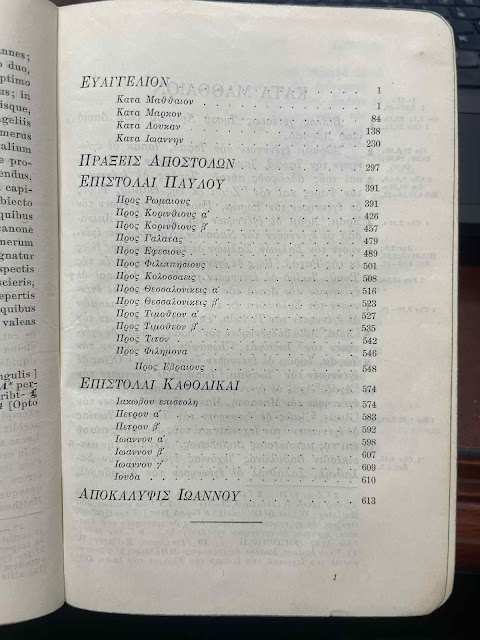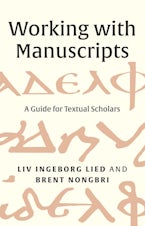Here’s something I never noticed before. The order of books in Nestle’s 1st ed. (1898) follows Luther’s 1522 NT. Here you can see the two side-by-side. What makes the Nestle odd in a way even Luther’s is not is the headings. I may be wrong, but I can’t remember Hebrews ever being included with the Catholic Letters in any manuscript.
 |
 |
| Luther Bible (1522) | Nestle 1 (1898) |
By the third edition (1901) the books were back in their Erasmian order, although Hebrews was still set off just slightly from the other Pauline letters. You can see it here in my copy of the 13th edition which is the same.
 |
| Nestle 13 reflecting the changed book order |
It’s worth mentioning this because my understanding is that the NA29 will switch the order of books, placing the Catholic Epistles immediately after Acts. As a result, the NA will match one of its original three sources and the one that Nestle himself
called “the one constituent factor” in his edition (=WH).
Minor update: I notice the Nestle 13th ed. (1927) has the following note at the bottom of the page of Rom 1: “HTWS [=WH, Tischendorf, Weiss, and von Soden]
Epistolas Catholicas (Jc, 1.2 P, 1-3 J, Jd) Paulinis anteponunt; epistolam ad Hebraeos datam epistolis pastoralibus praemittunt.”
P.S. Did you know you can look at scans of all the Nestle/Nestle-Aland editions in the VMR? In the Manuscript Workspace, search for N1, N2, etc. in the Manuscripts tab search box. From the 22nd ed. on, search for NA22, etc.






